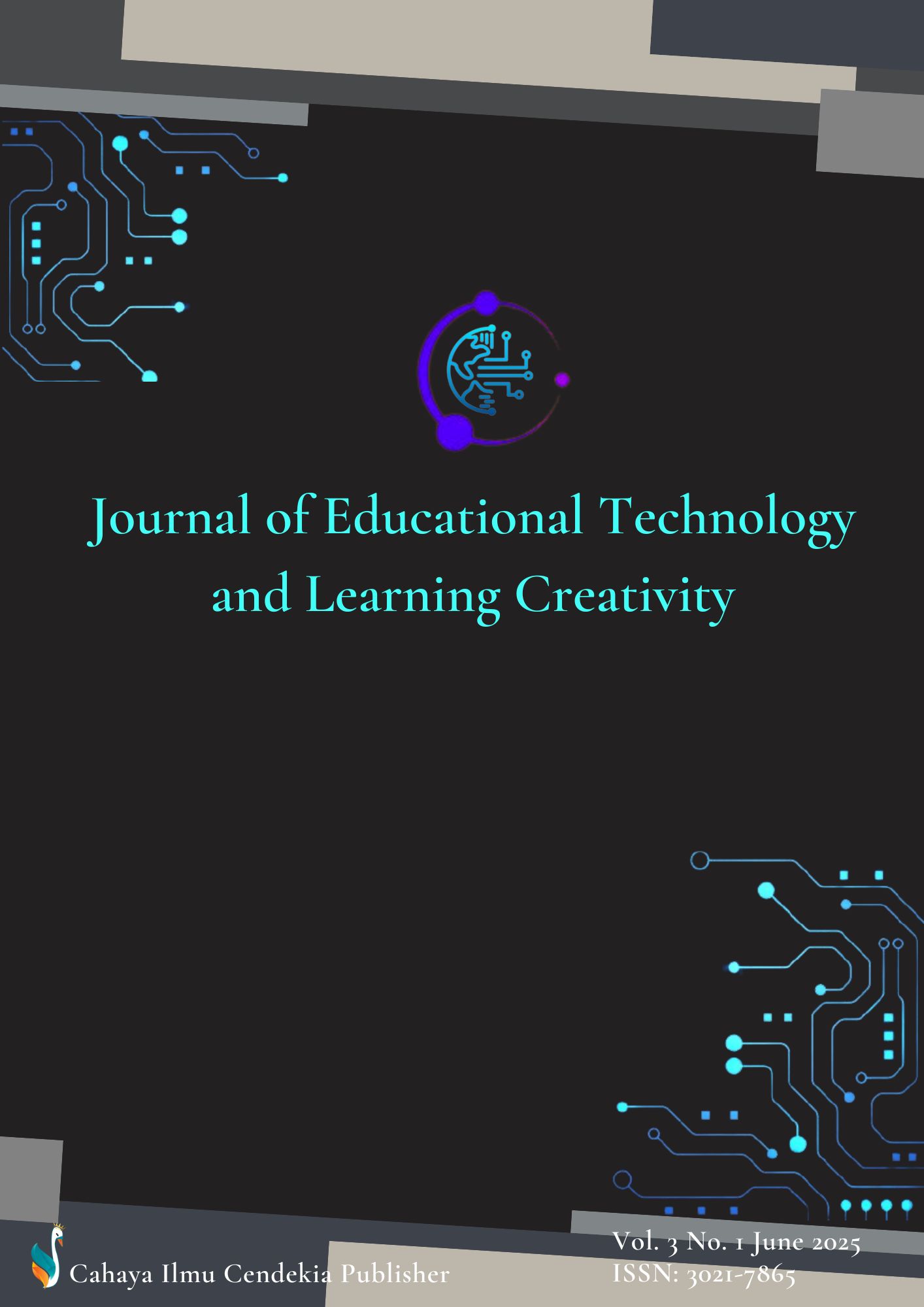Innovative Forest Fire Detection Using LoRa Wireless Network for Long-Range and Real-Time Monitoring
Abstract
detection tool based on wireless technology that can send information in real-time without an internet network. This system helps related parties detect and respond to fires more quickly and efficiently.
Methodology: This study employs an experimental research method, using tools such as Arduino, LoRa, DHT11, MQ2 sensors, and ESP32 Wi-Fi modules. Data collection methods include observation, interviews, and literature review. Software used includes Arduino IDE, Sublime, and Windows 10. Prototyping is applied for system design, with unit, system, and integrity testing for system validation. Data analysis is qualitative, with a focus on real-time monitoring.
Main Findings: The LoRa forest fire detection system works well, sending temperature, humidity, and smoke data to the website. Tests show that the device can work at a distance of up to 1 km. The fire status only appears if the temperature is above 40°C, humidity is above 10%, and smoke is above 2670 ppm. At close range, the device successfully detects fires, while at further distances, the safe status is displayed.
Novelty/Originality of this study: This study introduces a forest fire detection system using LoRa wireless communication, combining real-time monitoring of temperature, humidity, and smoke. The integration of Arduino-based sensors with LoRa for long-range data transmission offers an innovative approach. This research advances existing fire detection technologies by improving coverage and real-time data transmission, enhancing the accuracy and reliability of wildfire monitoring systems.
References
R. Basqian and I. A. Fatahillah, “The impact of deforestation on the environment and sustainable development in Indonesia,” COMPETENTIE J. Int. Sustain. Res., vol. 1, no. 4, pp. 12–16, 2024, [Online]. Available: https://journal.inacexter.com/index.php/competentie
D. Kopansky, M. Reed, M. Kaplan, and J. Hughes, Global peatlands assessment: the state of the world’s peatlands., no. November. 2022. [Online]. Available: https://www.unep.org/resources/global-peatlands-
R. Ahammad, M. K. Hossain, I. Sobhan, R. Hasan, S. R. Biswas, and S. A. Mukul, “Social-ecological and institutional factors affecting forest and landscape restoration in the Chittagong Hill Tracts of Bangladesh,” Land use policy, vol. 125, no. April 2022, p. 106478, 2023, doi: 10.1016/j.landusepol.2022.106478.
L. Zhu and K. Lo, “Non-timber forest products as livelihood restoration in forest conservation: A restorative justice approach,” Trees, For. People, vol. 6, p. 100130, 2021, doi: 10.1016/j.tfp.2021.100130.
N. R. Talukdar, P. Choudhury, R. A. Barbhuiya, and B. Singh, “Importance of Non-Timber Forest Products (NTFPs) in rural livelihood: a study in Patharia Hills Reserve Forest, northeast India,” Trees, For. People, vol. 3, no. October 2020, p. 100042, 2021, doi: 10.1016/j.tfp.2020.100042.
D. Binkley, “Assmann review: spatial ecology of rotational and continuous cover forestry in boreal landscapes,” Eur. J. For. Res., 2025, doi: 10.1007/s10342-024-01756-z.
M. Khairul Alam, “Traditional ecological knowledge on non-wood forest products management and biodiversity conservation: a focus on Chittagong Hill Tracts (CHTs), Bangladesh BT - non-wood forest products of Asia: knowledge, conservation and livelihood,” A. Z. M. M. Rashid, N. A. Khan, and M. Hossain, Eds., Cham: Springer International Publishing, 2022, pp. 41–69. doi: 10.1007/978-3-030-99313-9_3.
G. G. Sokolova, “Biological reserves of bracken fern ( Pteridium Aquilinum (L.) Kuhn.) in the coniferous forests of Altai Territory,” IOP Conf. Ser. Earth Environ. Sci., vol. 1229, no. 1, pp. 0–10, 2023, doi: 10.1088/1755-1315/1229/1/012015.
P. Souza-Alonso, G. Saiz, R. A. García, A. Pauchard, A. Ferreira, and A. Merino, “Post-fire ecological restoration in Latin American forest ecosystems: Insights and lessons from the last two decades,” For. Ecol. Manage., vol. 509, 2022, doi: 10.1016/j.foreco.2022.120083.
C. P. Kala, “Environmental and socioeconomic impacts of forest fires: A call for multilateral cooperation and management interventions,” Nat. Hazards Res., vol. 3, no. 2, pp. 286–294, 2023, doi: 10.1016/j.nhres.2023.04.003.
Z. Han, G. Geng, Z. Yan, and X. Chen, “Economic loss assessment and spatial–temporal distribution characteristics of forest fires: empirical evidence from China,” Forests, vol. 13, no. 12, 2022, doi: 10.3390/f13121988.
D. J. Kotze et al., “Urban forest invertebrates: how they shape and respond to the urban environment,” Urban Ecosyst., vol. 25, no. 6, pp. 1589–1609, 2022, doi: 10.1007/s11252-022-01240-9.
J. F. Guégan, B. de Thoisy, M. Gomez-Gallego, and H. Jactel, “World forests, global change, and emerging pests and pathogens,” Curr. Opin. Environ. Sustain., vol. 61, p. 101266, 2023, doi: 10.1016/j.cosust.2023.101266.
P. De Frenne et al., Forest microclimates and climate change: Importance, drivers and future research agenda, vol. 27, no. 11. 2021. doi: 10.1111/gcb.15569.
Z. Wu, B. Wang, M. Li, Y. Tian, Y. Quan, and J. Liu, “Simulation of forest fire spread based on artificial intelligence,” Ecol. Indic., vol. 136, no. December 2021, p. 108653, 2022, doi: 10.1016/j.ecolind.2022.108653.
X. Li et al., “Prediction of forest fire spread rate using UAV images and an LSTM model considering the interaction between fire and wind,” Remote Sens., vol. 13, no. 21, 2021, doi: 10.3390/rs13214325.
V. E. Sathishkumar, J. Cho, M. Subramanian, and O. S. Naren, “Forest fire and smoke detection using deep learning-based learning without forgetting,” Fire Ecol., vol. 19, no. 1, 2023, doi: 10.1186/s42408-022-00165-0.
H. Y. Arıcı and H. Ak, “A perspective on sustainable ecology in the light of the qur’an,” OPUS-Journal Soc. Res., vol. 19, no. 46, pp. 380–392, 2022.
N. A. Mohidem and Z. Hashim, “Integrating environment with health: an islamic perspective,” Soc. Sci., vol. 12, no. 6, 2023, doi: 10.3390/socsci12060321.
M. Akour and M. Alenezi, “Higher education future in the era of digital transformation,” Educ. Sci., vol. 12, no. 784, pp. 1–13, 2022, doi: 10.3390/educsci12110784.
A. Haleem, M. Javaid, M. A. Qadri, and R. Suman, “Understanding the role of digital technologies in education: A review,” Sustain. Oper. Comput., vol. 3, pp. 275–285, 2022.
H. O. Khogali and S. Mekid, “The blended future of automation and AI: Examining some long-term societal and ethical impact features,” Technol. Soc., vol. 73, no. March, p. 102232, 2023, doi: 10.1016/j.techsoc.2023.102232.
E. Parry and V. Battista, “The impact of emerging technologies on work: a review of the evidence and implications for the human resource function,” Emerald Open Res., vol. 1, p. 5, 2019, doi: 10.12688/emeraldopenres.12907.1.
N. Kroon, M. Do Céu Alves, and I. Martins, “The impacts of emerging technologies on accountants’ role and skills: Connecting to open innovation-a systematic literature review,” J. Open Innov. Technol. Mark. Complex., vol. 7, no. 3, 2021, doi: 10.3390/joitmc7030163.
J. Zhang and Z. Chen, “Exploring human resource management digital transformation in the digital age,” J. Knowl. Econ., vol. 15, no. 1, pp. 1482–1498, 2024, doi: 10.1007/s13132-023-01214-y.
Z. Allam and D. S. Jones, “Future (post-COVID) digital, smart and sustainable cities in the wake of 6G: Digital twins, immersive realities and new urban economies,” Land use policy, vol. 101, 2021, doi: 10.1016/j.landusepol.2020.105201.
H. Taleb, A. Nasser, G. Andrieux, N. Charara, and E. Motta Cruz, “Wireless technologies, medical applications and future challenges in WBAN: a survey,” Wirel. Networks, vol. 27, no. 8, pp. 5271–5295, 2021, doi: 10.1007/s11276-021-02780-2.
K. Detka and K. Górecki, “Wireless Power Transfer—A Review,” Energies, vol. 15, no. 19, 2022, doi: 10.3390/en15197236.
B. Herring et al., “Underground LoRa Sensor Node for Bushfire Monitoring,” Fire Technol., vol. 58, no. 3, pp. 1087–1095, 2022, doi: 10.1007/s10694-022-01224-3.
A. Skouteri, K. Spanos, P. Kourakli, and P. Koulelis, “Forest Ecosystems, Forest Fire Internet of Things (FFIoT), and Socioeconomic Aspects BT - Fire Hazards: Socio-economic and Regional Issues,” J. Rodrigo-Comino and L. Salvati, Eds., Cham: Springer International Publishing, 2024, pp. 167–179. doi: 10.1007/978-3-031-50446-4_13.
A. A. A. Alkhatib and K. M. Jaber, “FDPA internet of things system for forest fire detection, prediction and behaviour analysis,” IET Wirel. Sens. Syst., vol. 14, no. 3, pp. 56–71, 2024, doi: 10.1049/wss2.12076.
A. Topan Indra, H. Harmadi, and M. Marzuki, “Prototype of forest and land fire monitoring and detection system using IoT-Based WSN technology,” J. Penelit. Pendidik. IPA, vol. 9, no. 12, pp. 11837–11845, 2023, doi: 10.29303/jppipa.v9i12.5736.
R. Singh, A. Gehlot, S. Vaseem Akram, A. Kumar Thakur, D. Buddhi, and P. Kumar Das, “Forest 4.0: Digitalization of forest using the Internet of Things (IoT),” J. King Saud Univ. - Comput. Inf. Sci., vol. 34, no. 8, Part B, pp. 5587–5601, 2022, doi: https://doi.org/10.1016/j.jksuci.2021.02.009.
A. Sharma, A. Nayyar, K. J. Singh, D. S. Kapoor, K. Thakur, and S. Mahajan, “An IoT-based forest fire detection system: design and testing,” Multimed. Tools Appl., vol. 83, no. 13, pp. 38685–38710, 2024, doi: 10.1007/s11042-023-17027-9.
M. N. A. Ramadan et al., “Towards early forest fire detection and prevention using AI-powered drones and the IoT,” Internet of Things (Netherlands), vol. 27, no. June, p. 101248, 2024, doi: 10.1016/j.iot.2024.101248.
M. Flood et al., “Research methods from human-centered design: Potential applications in pharmacy and health services research,” Res. Soc. Adm. Pharm., vol. 17, no. 12, pp. 2036–2043, 2021, doi: https://doi.org/10.1016/j.sapharm.2021.06.015.
A. Goldfarb, C. Tucker, and Y. Wang, “Conducting research in marketing with quasi-experiments,” J. Mark., vol. 86, no. 3, pp. 1–20, 2022, doi: 10.1177/00222429221082977.
C. G. Thomas, “Experimental Research BT - Research Methodology and Scientific Writing,” C. G. Thomas, Ed., Cham: Springer International Publishing, 2021, pp. 93–133. doi: 10.1007/978-3-030-64865-7_5.
T. C. Guetterman, S. Fàbregues, and R. Sakakibara, “Visuals in joint displays to represent integration in mixed methods research: A methodological review,” Methods Psychol., vol. 5, 2021, doi: 10.1016/j.metip.2021.100080.
T. K. Haynes-Brown and M. D. Fetters, “Using joint display as an analytic process: an illustration using bar graphs joint displays from a mixed methods study of how beliefs shape secondary school teachers’ use of technology,” Int. J. Qual. Methods, vol. 20, pp. 1–14, 2021, doi: 10.1177/1609406921993286.
R. Bender-Salazar, “Design thinking as an effective method for problem-setting and needfinding for entrepreneurial teams addressing wicked problems,” J. Innov. Entrep., vol. 12, no. 1, 2023, doi: 10.1186/s13731-023-00291-2.
S. Syafril, Z. Asril, E. Engkizar, A. Zafirah, F. A. Agusti, and I. Sugiharta, “Designing prototype model of virtual geometry in mathematics learning using augmented reality,” in IOP Conference Series: Earth and Environmental Science, 2021. doi: 10.1088/1742-6596/1796/1/012035.
S. Lee, L. Matthew, and G. and Hoffman, “When and how to use AI in the design process? implications for human-AI design collaboration,” Int. J. Human–Computer Interact., vol. 41, no. 2, pp. 1569–1584, Jan. 2025, doi: 10.1080/10447318.2024.2353451.
M. Alhamed and M. M. H. Rahman, “A systematic literature review on penetration testing in networks: future research directions,” Appl. Sci., vol. 13, no. 12, 2023, doi: 10.3390/app13126986.
E. A. Altulaihan, A. Alismail, and M. Frikha, “A survey on web application penetration testing,” Electron., vol. 12, no. 5, 2023, doi: 10.3390/electronics12051229.
S. Zafar, G. Miraj, R. Baloch, D. Murtaza, and K. Arshad, “An IoT based real-time environmental monitoring system using arduino and cloud service,” Eng. Technol. Appl. Sci. Res., vol. 8, no. 4, pp. 3238–3242, 2018.
X. Li, A. Vázquez-López, J. Sánchez del Río Sáez, and D.-Y. Wang, “Recent advances on early-stage fire-warning systems: mechanism, performance, and perspective,” Nano-Micro Lett., vol. 14, no. 1, p. 197, 2022, doi: 10.1007/s40820-022-00938-x.
R. Anand, P. Monisha, T. Nathiya, and S.Karthik, “LoRa IoT network for instant forest fire detection and alert system,” Sci. Res. New Technol. Appl. Vol. 7, no. SE-Chapters, pp. 125–137, Nov. 2024, doi: 10.9734/bpi/srnta/v7/2948.
Y. Apriani, W. A. Oktaviani, and I. M. Sofian, “Design and implementation of LoRa-Based forest fire monitoring system,” J. Robot. Control, vol. 3, no. 3, pp. 236–243, 2022, doi: 10.18196/jrc.v3i3.14128.
Z. Saryendy and M. Unik, “Development of Internet Of Things ( IOT ) system with LoRa ( Long Range ) and solar energy for automatic detection of forest and ground fires,” J. Comput. Sci. Inf. Technol. ( CoSciTech ), vol. 5, no. 2, pp. 340–347, 2024.
Copyright (c) 2025 Nor Hissam Sulaiman, Nur Adelianthi, Pinky Jee B. Albarico, Christopher Fulton

This work is licensed under a Creative Commons Attribution 4.0 International License.
Authors who publish with this journal agree to the following terms:
- Authors retain copyright and acknowledge that the Journal of Educational Technology and Learning Creativity is the first publisher licensed under a Creative Commons Attribution 4.0 International License.
- Authors are able to enter into separate, additional contractual arrangements for the non-exclusive distribution of the journal's published version of the work (e.g., post it to an institutional repository or publish it in a book), with an acknowledgment of its initial publication in this journal.
- Authors are permitted and encouraged to post their work online (e.g., in institutional repositories or on their website) prior to and during the submission process, as it can lead to productive exchanges and earlier and greater citation of published work.


.png)


.png)
.png)
.png)












